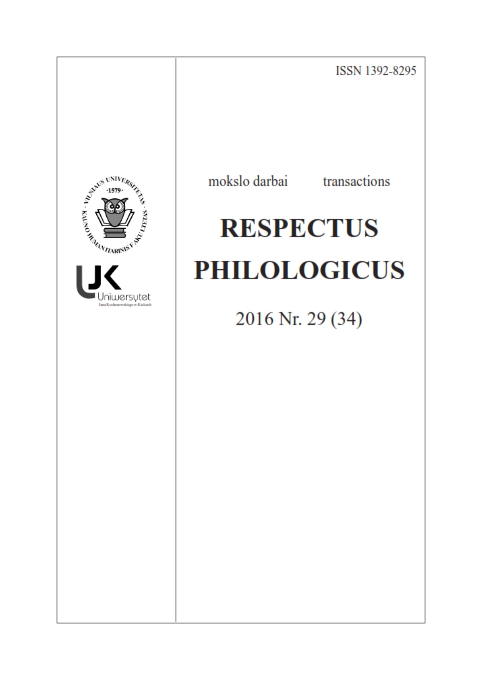TARMIŲ MENTALINIO ŽEMĖLAPIO (NE)TIKSLUMO VEIKSNIAI: TARMĖS VARTOJIMAS VS. NEVARTOJIMAS
UN(ACCURACY) FACTORS OF THE MENTAL MAP OF DIALECTS: USING VS. NON-USING A DIALECT
Author(s): Erika Merkytė-ŠvarcienėSubject(s): Sociolinguistics, Cognitive linguistics, Baltic Languages
Published by: Vilniaus Universiteto Leidykla
Keywords: perceptual dialectology; mental map; geolinguistic competence; ordinary members of the language community;
Summary/Abstract: The aim of the article is to analyse the mental maps of the Western Upper Lithuania youth residing in Šiauliai region and evaluate the links between the accuracy of the mental maps and the ability to use a dialect. The respondents of the questionnaire name three main dialectal speech zones: Upper Lithuania, Lower Lithuania and Dzūkija. It is interesting that the ethnographic region of Suvalkija is not mentioned. It is assumed that the youth of the Upper Lithuania (Šiauliai) associates Suvalkija dialect with the standard language. Most of the respondents from the Upper Lithuania (Šiauliai) marked particular cities, such as Utena, Marijampolė, Mažeikiai, Skuodas, Plungė, Biržai, Telšiai, Šiauliai etc., in the mental map of Lithuania. These cities are the prototypical cities, which are frequently mentioned in other researches. The prototypical cities of the Lower Lithuania dialect are Mažeikiai, Skuodas, Plungė, Telšiai; whereas, the prototypical cities of the Upper Lithuania dialect are Biržai and Utena. A small number of the respondents approve the scientific classification of dialects, which subdivides Lithuania’s dialects into Lower Lithuania and Upper Lithuania dialects.
Journal: Respectus Philologicus
- Issue Year: 2016
- Issue No: 29(34)
- Page Range: 139-154
- Page Count: 16
- Language: Lithuanian

